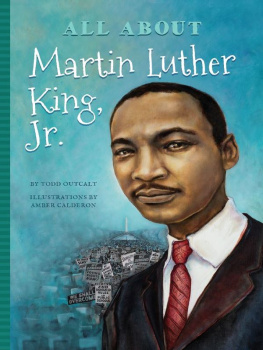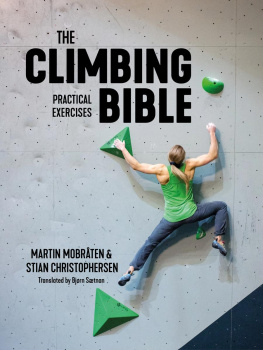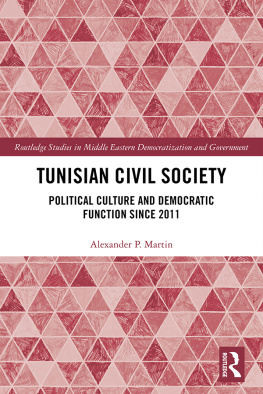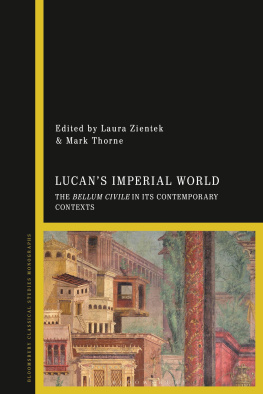Martin T. Dinter - Anatomizing Civil War: Studies in Lucans Epic Technique
Here you can read online Martin T. Dinter - Anatomizing Civil War: Studies in Lucans Epic Technique full text of the book (entire story) in english for free. Download pdf and epub, get meaning, cover and reviews about this ebook. year: 2018, publisher: The University of Michigan Press, genre: Science. Description of the work, (preface) as well as reviews are available. Best literature library LitArk.com created for fans of good reading and offers a wide selection of genres:
Romance novel
Science fiction
Adventure
Detective
Science
History
Home and family
Prose
Art
Politics
Computer
Non-fiction
Religion
Business
Children
Humor
Choose a favorite category and find really read worthwhile books. Enjoy immersion in the world of imagination, feel the emotions of the characters or learn something new for yourself, make an fascinating discovery.
- Book:Anatomizing Civil War: Studies in Lucans Epic Technique
- Author:
- Publisher:The University of Michigan Press
- Genre:
- Year:2018
- Rating:5 / 5
- Favourites:Add to favourites
- Your mark:
- 100
- 1
- 2
- 3
- 4
- 5
Anatomizing Civil War: Studies in Lucans Epic Technique: summary, description and annotation
We offer to read an annotation, description, summary or preface (depends on what the author of the book "Anatomizing Civil War: Studies in Lucans Epic Technique" wrote himself). If you haven't found the necessary information about the book — write in the comments, we will try to find it.
Anatomizing Civil War: Studies in Lucans Epic Technique — read online for free the complete book (whole text) full work
Below is the text of the book, divided by pages. System saving the place of the last page read, allows you to conveniently read the book "Anatomizing Civil War: Studies in Lucans Epic Technique" online for free, without having to search again every time where you left off. Put a bookmark, and you can go to the page where you finished reading at any time.
Font size:
Interval:
Bookmark:
 Page i Page ii Page iii
Page i Page ii Page iii 
MARTIN T. DINTER
The University of Michigan Press
Ann Arbor
Copyright Martin T. Dinter 2012
All rights reserved
This book may not be reproduced, in whole or in part, including illustrations, in any form (beyond that copying permitted by Sections 107 and 108 of the U.S. Copyright Law and except by reviewers for the public press), without written permission from the publisher.
Published in the United States of America by
The University of Michigan Press
Manufactured in the United States of America Printed on acid-free paper
Printed on acid-free paper
2015 2014 2013 2012 4 3 2 1
A CIP catalog record for this book is available from the British Library.
Library of Congress Cataloging-in-Publication Data
Dinter, Martin T.
Anatomizing Civil War : studies in Lucans epic technique / Martin Dinter.
pages cm
Includes bibliographical references and index.
ISBN 978-0-472-11850-2 (hardback) ISBN 978-0-472-02871-9 (e-book)
1. Lucan, 3965. Pharsalia. 2. Lucan, 3965Technique. 3. Epic poetry, LatinHistory and criticism. 4. RomeHistoryCivil War, 4945 B.C. Literature and the war. I. Title.
PA6480.D56 2012
873'.01 dc23
2012042614
parentibus optimis

With great pleasure I thank the following institutions for their kind and generous support in the course of my research: DAAD, Cusanuswerkbischfliche Studienfrderung e.V., University of Heidelberg-Cambridge Programme, AHRC, St. Johns College Benefactor Scholarships, The Cambridge European Trust, The Jebb Fund, The Kurt Hahn Trust, The Fondation Hardt.
The support of the Cambridge Classics Faculty allowed me to attend many a conference. I have presented parts of my Lucan project at research seminars and conferences at the universities of Basel, Bordeaux, Cambridge, Liverpool, Oxford, Rostock, Virginia, Warwick, and Wrzburg and have at these occasions greatly benefited from the comments made by Matthew Leigh, Chris Kraus, Shadi Bartsch, Sylvie Franchet dEspery, Christine Walde, Bruce Gibson, Tony Woodman, and Thomas Baier. I also wish to thank Glenn W. Most and Christiane Reitz for their inspirational teaching at Heidelberg, as well as Philip Hardie and John Henderson at Cambridge. The latter has directed my PhD thesis, from which this book stems, toward its completion during three years with much patience, diligence, and encouragement and has been the ideal Doktorvater. My thanks to him. I also extend my thanks to Emily Gowers and Stephen Harrison, who have acted as my PhD examiners.
Elaine Fantham has given me access to forthcoming material and kindly read my entire manuscript, and her wise comments have often spurred more than she could ever have imagined, while Michael Reeves and the late John A. Crooks astute criticism has saved me from many an error. John A. Crook has also kindly provided translations of the Epitaphium Lucani and the Argumenta Lucani. Philip Hardie has offered generous comments and has made available Page viii excerpts from his forthcoming book on Fama, and Susanna Morton Braund has ever so kindly given me permission to use her translation of Lucanit has stood as model throughout. De Gruyter has kindly given me permission to reuse material from my chapters Lucans Epic Body, in Lucan im 21. Jahrhundert, edited by Ch. Walde (Munich: K. G. Saur, 2005), 295312, and... und es bewegt sich dochder Automatismus des abgehackten Gliedes in Lukan in Lucan between Epic Tradition and Aesthetic Innovation, edited by Ch. Reitz and N. Hmke (Berlin: De Gruyter, 2010), 175190. I am also grateful to the Muse Fabre de Montpellier, for granting me the right to reproduce Gericaults painting on the jacket of this book. Particular thanks go to Charles Guerin for his patient and repeated help and cultural diplomacy in this matter.
I am most indebted to the librarians at the Cambridge Classical Library, Stephen Howe and Lyn Bailey, for their splendid cooperation and support. In addition I have received further bibliographical help with hunting down rare continental items from Andreas Bartholom, Antonia Ruppel, and especially Cornelia Vetter. Inge and Abed Sai have been the most generous of all hosts during my time in Britain, and so has Jesus Agustin Badillo-Corona in Mexico. My parents, who have continually offered their love and support, end this list. I dedicate this work to my mother and the memory of my father, who left us when I had only just finished this project.
Martin T. Dinter
- . Cf. Hardie 2012. Asso 2011 appeared after the manuscript had been completed.

- Page x

Let us mop up the blood and appreciate Lucans epic as a work of art, in the guise of the painting that serves as frontispiece. What would art critics have to say about this picture? Would they judge in the same way as the catalog of a recent London exhibition in which Thodore Gricaults Study of Truncated Limbs (c. 181819)
Today a study of Lucan no longer needs apology, for what was once considered to be not much more than a pile of truncated textual limbs in an unfinished and therefore unpolished epic corpus has been rehabilitated. Morford, Ahl, Johnson, Henderson, Masters, Leigh, and Bartsch have all fought the good fight. Accordingly, from my privileged position I am looking back to a wealth of scholarship that has changed our outlook on Lucan.
Much of the research on Lucans epic account of the civil war between Julius Caesar and Pompey has focused on politics and ideology. In addition often it has exclusively addressed the question of Lucans relationship to his presumed sources, not least the prose history of Livy and the account of Caesar himself, or has concerned itself with the influence contemporary rhetorical education and practice has had on Lucan.
Page 2 My study, however, aims to take Lucan more on his own terms as a poet by examining a number of related techniques that combine to create a unique poetic form and vision. I argue for the importance of a unifying imagery based on the body, whether of the state, of the army, or of the poem itself, for a unifying literary purpose, in which traditional epic and heroic glory is replaced by a different conception of fame, particularly the fame of the poet, and for the unifying, pervasive, and positive contribution of two widely used poetic and rhetorical devices, epigrammatic sententiae and abundant repetition of both narrative moves and lexical items. By treating Lucan as a poet we will see how Lucans epic technique shapes his literary corpus.
My first chapter, on Lucans use of body imagery, explores the use of body vocabulary in Lucans epic. We find it employed in at least five different connections:
the cosmic body
the Roman state body
the military corps
the human body
the textual body
By examining Lucans treatment of individual bodies and social groupings I map out the parameters of Lucans anatomical conceptualization of Rome, the Roman state, and the world as a whole. These parameters are then exemplified by a reading of
Font size:
Interval:
Bookmark:
Similar books «Anatomizing Civil War: Studies in Lucans Epic Technique»
Look at similar books to Anatomizing Civil War: Studies in Lucans Epic Technique. We have selected literature similar in name and meaning in the hope of providing readers with more options to find new, interesting, not yet read works.
Discussion, reviews of the book Anatomizing Civil War: Studies in Lucans Epic Technique and just readers' own opinions. Leave your comments, write what you think about the work, its meaning or the main characters. Specify what exactly you liked and what you didn't like, and why you think so.











